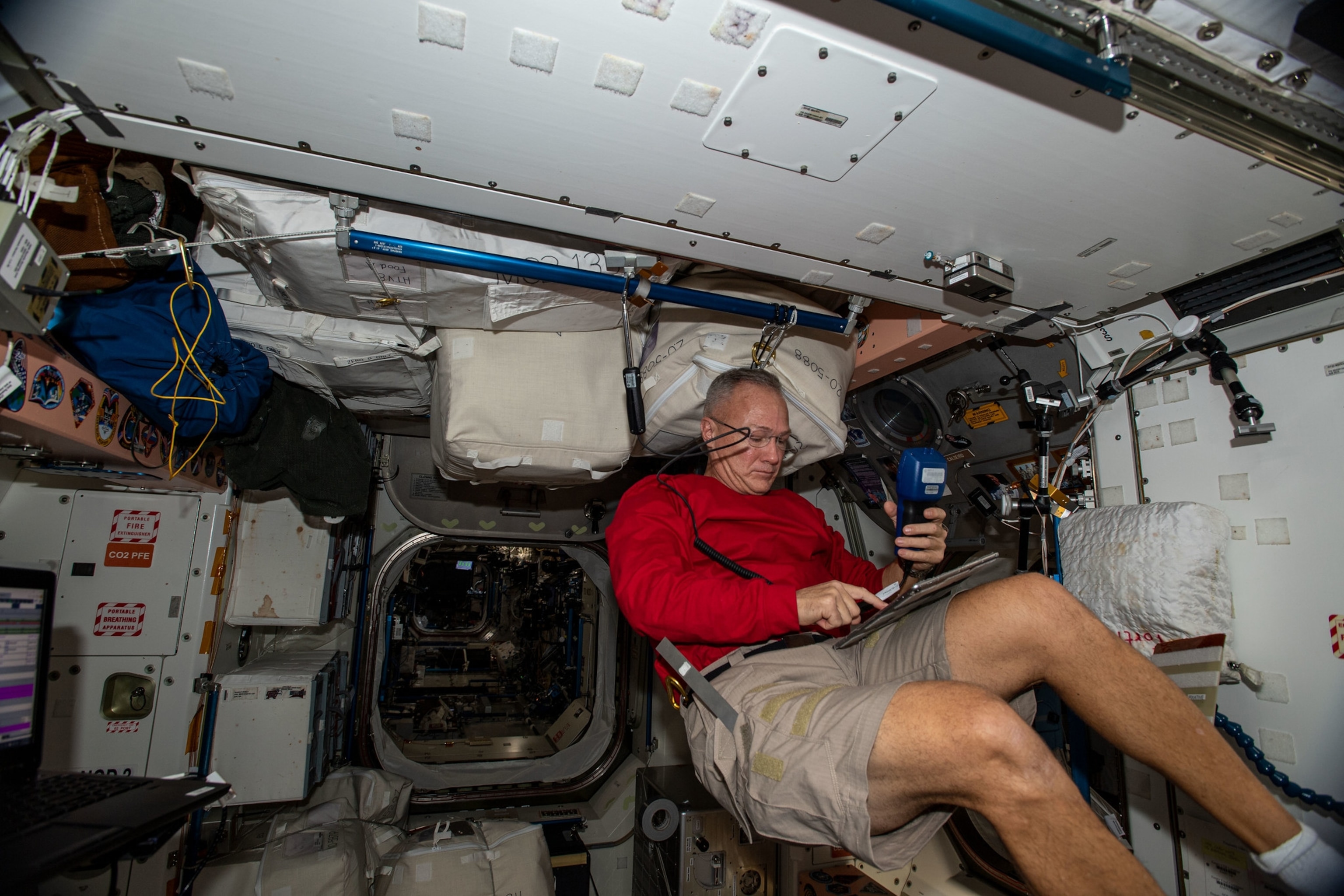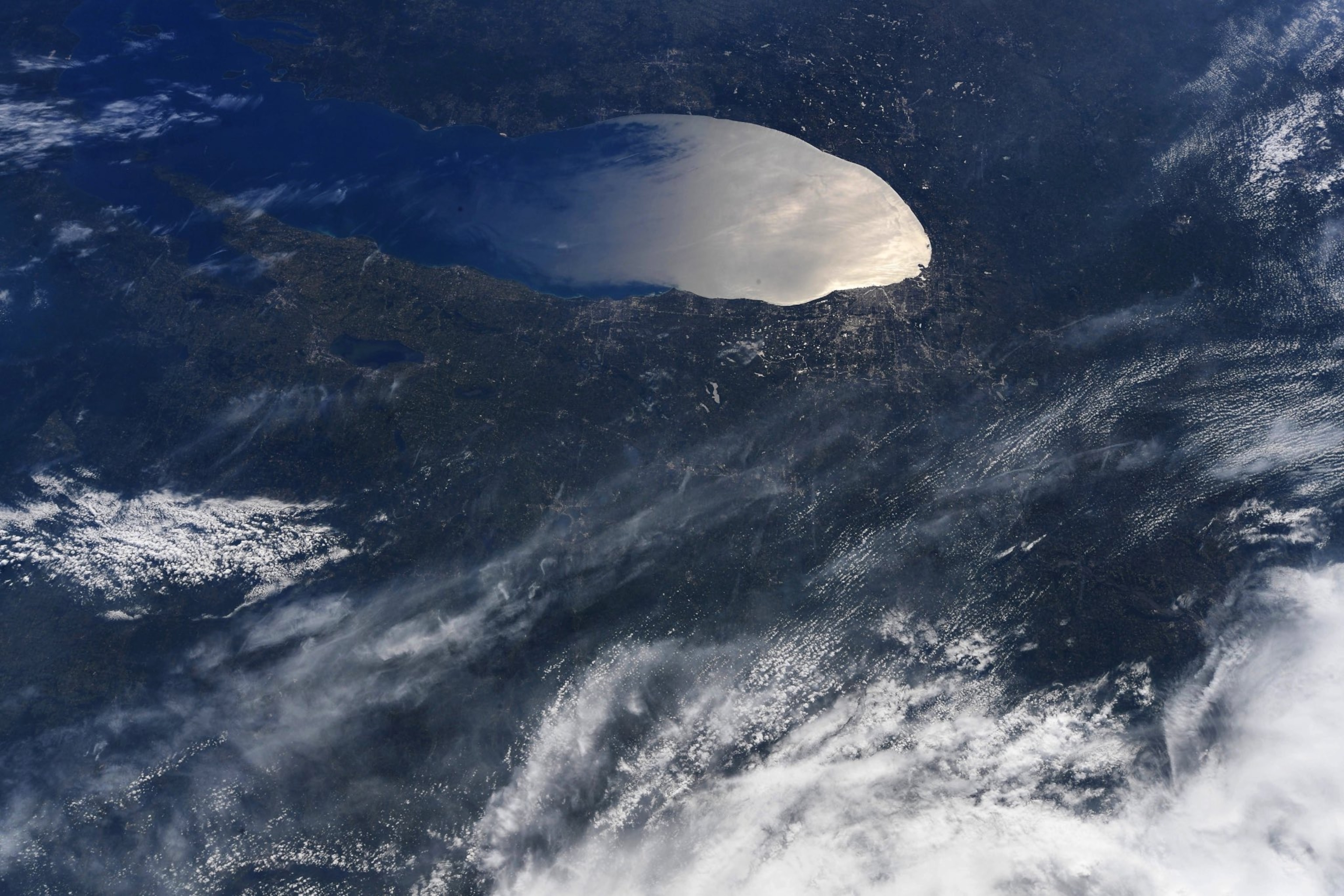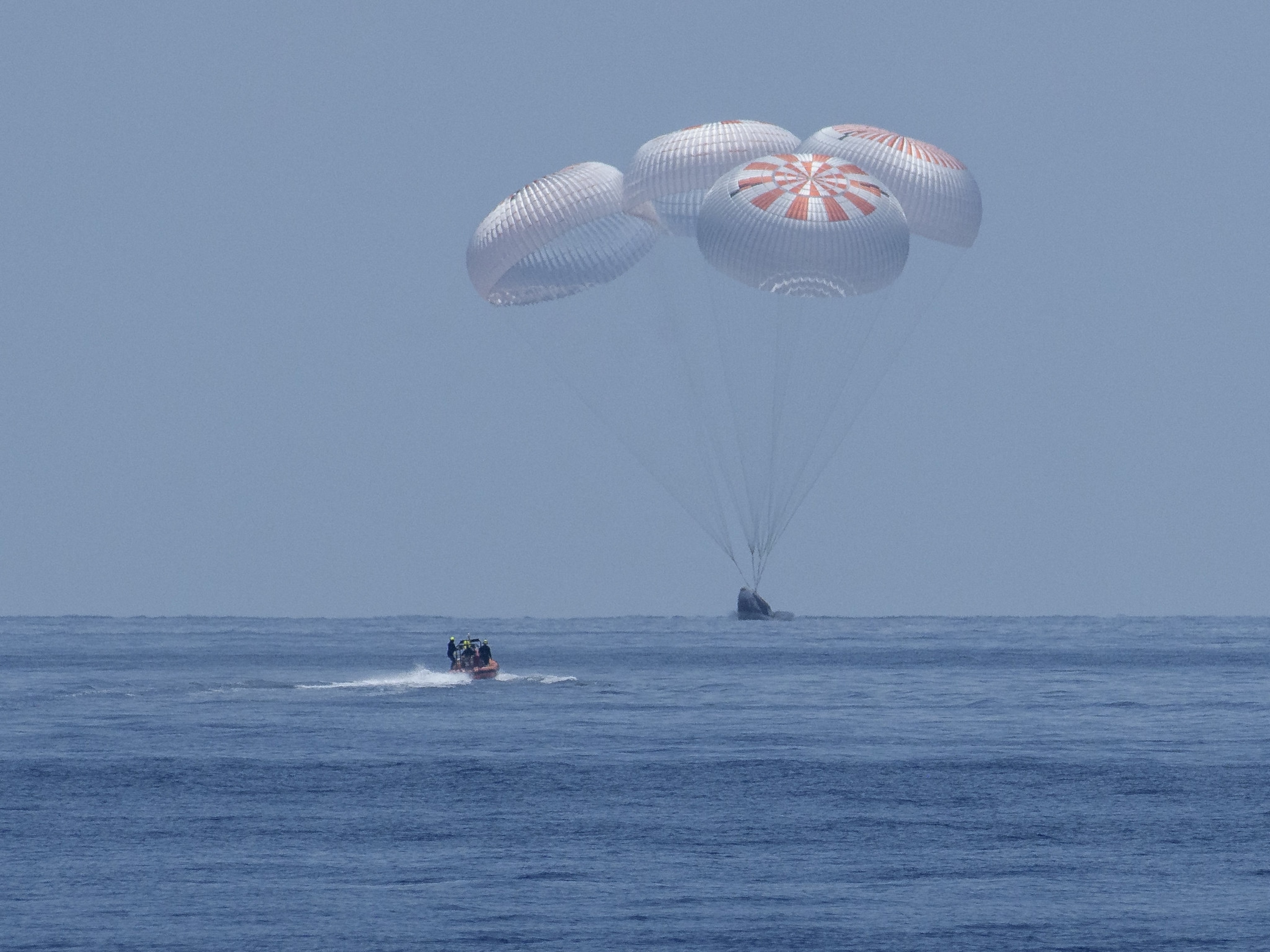After more than two months aboard the International Space Station (ISS), NASA astronauts Bob Behnken and Doug Hurley returned to Earth today, parachuting through the planet’s skies in a SpaceX Dragon capsule. The pair splashed down at 2:48 p.m. ET in the Gulf of Mexico—a site off the coast of the Florida Panhandle and far enough west to avoid the winds and rain of Hurricane Isaias.
The pair’s journey home concludes a history-making test flight called Demo-2, which returned crewed spaceflight capabilities to the United States after a nearly 10-year hiatus. The mission lifted off on May 30, marking the first time NASA astronauts piloted a spacecraft that’s owned and operated by a commercial company, rather than the space agency itself.
Now, with a successful round trip on the books, SpaceX will launch at least six more NASA flights to the ISS. The first of these, called Crew-1, is scheduled for late September at the earliest. On the second flight—scheduled for spring 2021—Behnken’s wife, astronaut Megan McArthur, will launch aboard the same SpaceX Dragon that he test flew.
“She’s super excited to be assigned to a SpaceX mission,” Behnken said from the ISS before reentry. “I definitely have some advice about living inside of Dragon and where best to pack all your personal items.”
Dragon’s first crewed flight
Behnken and Hurley blasted off from Cape Canaveral, Florida, riding a blinding column of rocket fire into the overcast sky and leaving a curly, corkscrewed cloud in their wake. They docked their spacecraft with the ISS on May 31 and joined a three-person team that was already on the station.




“It’s been fantastic to have buddies at the chow table to reflect on the day, think about tomorrow, and talk about world events,” U.S. astronaut Chris Cassidy, who flew to space on a Russian Soyuz capsule in April, said from the ISS.
During their stay, the Demo-2 crew helped out with station maintenance and science experiments. Behnken and Cassidy performed four spacewalks, upgrading power systems and prepping the station for a future airlock. And of course, the astronauts put Crew Dragon through its paces.
“We did habitability testing, we tested interfaces, we tested emergency comm … and just generically how we work with Dragon docked,” Hurley said. ”Most of that went exactly as we planned. There were a couple of little tweaks here and there, but for the most part we’ve had pretty good luck.”
A bittersweet farewell
On the eve of Dragon’s return to Earth, mission managers selected the waters off Pensacola from seven potential splashdown sites near Florida’s coasts. The decision was determined primarily by weather and ocean conditions, which need to be calm enough for speed boats and a recovery ship to reach and retrieve the capsule quickly.










Earlier in the day, Cassidy and his fellow ISS crewmates, Russian cosmonauts Anatoly Ivanishin and Ivan Vagner, held a farewell ceremony for Behnken and Hurley. Cassidy presented Hurley with a well-traveled U.S. flag—the same flag that astronauts carried into space during the first space shuttle mission in 1981, and which Hurley later delivered to the space station when he piloted the last shuttle flight in 2011.
“This flag has spent some time up here, on the order of nine years since we dropped it off,” Hurley said. “I’m very proud to return this flag home and see what’s next for it.”
Then the two spacefarers undocked from the ISS tucked into the space capsule, which they have dubbed Endeavour in a nod to the first space shuttle they both flew on as rookie astronauts—Behnken in 2008 and Hurley in 2009.
“It’s relatively small, so if you tried to put a full crew of seven, like we had on the space shuttle days, inside that volume, it would be a stay-in-your-seat situation,” Behnken said. “I wouldn’t say it’s a phone booth ... but it definitely is cozy if you were to get up to four people.”
After a series of autonomous engine burns to separate from the space station, Endeavour set itself on a course for Earth. The spacecraft dumped its disposable trunk, a 6,400-pound compartment filled with trash below the crew cabin, to burn up in Earth’s atmosphere.
The crew portion of Endeavour, however, hit the atmosphere at a blazing 17,500 miles an hour, protected by a heat shield that was previously covered by the trunk. Drag during reentry slowed the spacecraft to 350 miles an hour, and then the capsule released a series of parachutes to further slow its descent to the sea. After that, it was just a matter of splashing down in the Gulf. Now, they are waiting to be picked up by a ship and flown back to Houston.

Historically, water landings have been known to make astronauts queasy, as long-term space travelers are already disoriented by the return of gravity, which can dramatically affect fluids in the inner ear that are crucial for orientation and balance. Recognizing that, Behnken and Hurley both noted that Endeavour had been equipped with the “appropriate hardware” necessary to deal with intense bouts of seasickness.
“There are bags if you need ’em, and we’ll have those handy. We’ll probably have some towels handy as well,” Hurley said. “It certainly wouldn’t be the first time that’s happened in a space vehicle.”
But aside from a bit of possible nausea, Behnken and Hurley are safely back on Earth, and both veteran astronauts say they’re most eager about passing medical checks and reuniting with their families.

Related Topics
You May Also Like
Go Further
Animals
- How can we protect grizzlies from their biggest threat—trains?How can we protect grizzlies from their biggest threat—trains?
- This ‘saber-toothed’ salmon wasn’t quite what we thoughtThis ‘saber-toothed’ salmon wasn’t quite what we thought
- Why this rhino-zebra friendship makes perfect senseWhy this rhino-zebra friendship makes perfect sense
- When did bioluminescence evolve? It’s older than we thought.When did bioluminescence evolve? It’s older than we thought.
- Soy, skim … spider. Are any of these technically milk?Soy, skim … spider. Are any of these technically milk?
Environment
- Are the Great Lakes the key to solving America’s emissions conundrum?Are the Great Lakes the key to solving America’s emissions conundrum?
- The world’s historic sites face climate change. Can Petra lead the way?The world’s historic sites face climate change. Can Petra lead the way?
- This pristine piece of the Amazon shows nature’s resilienceThis pristine piece of the Amazon shows nature’s resilience
- Listen to 30 years of climate change transformed into haunting musicListen to 30 years of climate change transformed into haunting music
History & Culture
- Meet the original members of the tortured poets departmentMeet the original members of the tortured poets department
- Séances at the White House? Why these first ladies turned to the occultSéances at the White House? Why these first ladies turned to the occult
- Gambling is everywhere now. When is that a problem?Gambling is everywhere now. When is that a problem?
- Beauty is pain—at least it was in 17th-century SpainBeauty is pain—at least it was in 17th-century Spain
Science
- Here's how astronomers found one of the rarest phenomenons in spaceHere's how astronomers found one of the rarest phenomenons in space
- Not an extrovert or introvert? There’s a word for that.Not an extrovert or introvert? There’s a word for that.
- NASA has a plan to clean up space junk—but is going green enough?NASA has a plan to clean up space junk—but is going green enough?
- Soy, skim … spider. Are any of these technically milk?Soy, skim … spider. Are any of these technically milk?
Travel
- Could Mexico's Chepe Express be the ultimate slow rail adventure?Could Mexico's Chepe Express be the ultimate slow rail adventure?
- What it's like to hike the Camino del Mayab in MexicoWhat it's like to hike the Camino del Mayab in Mexico








